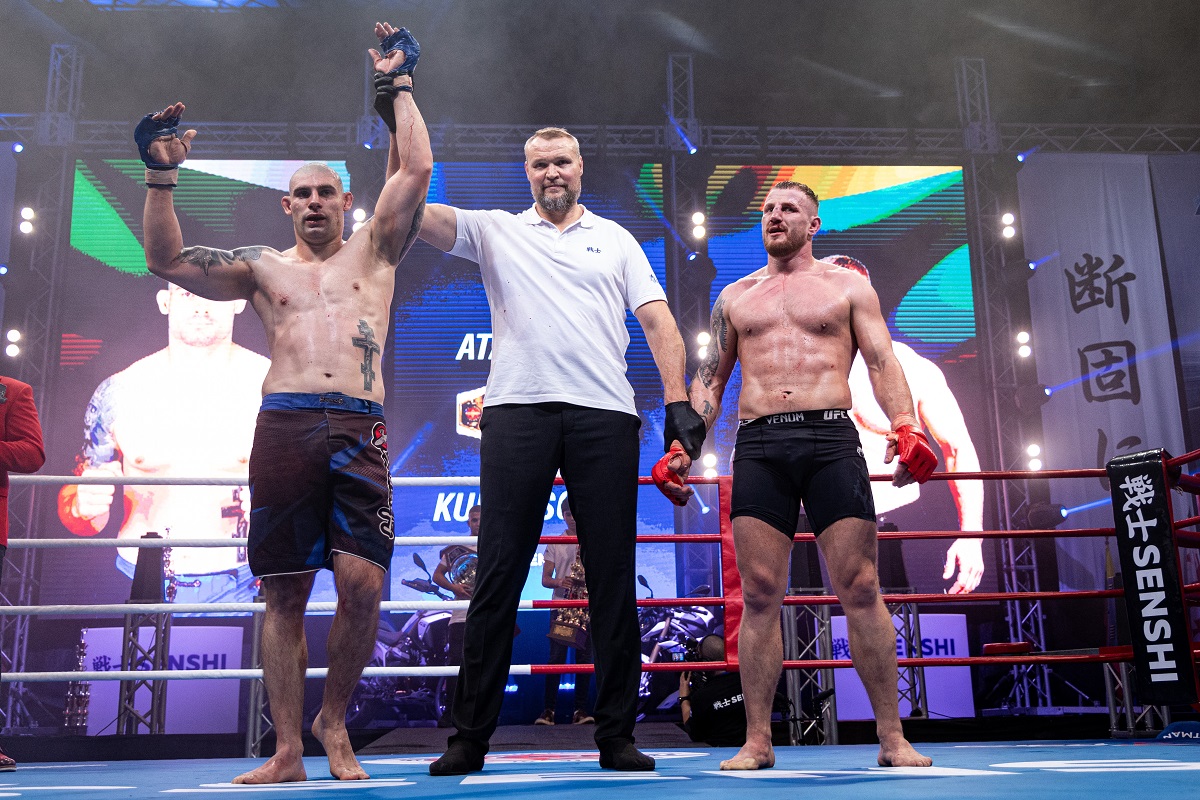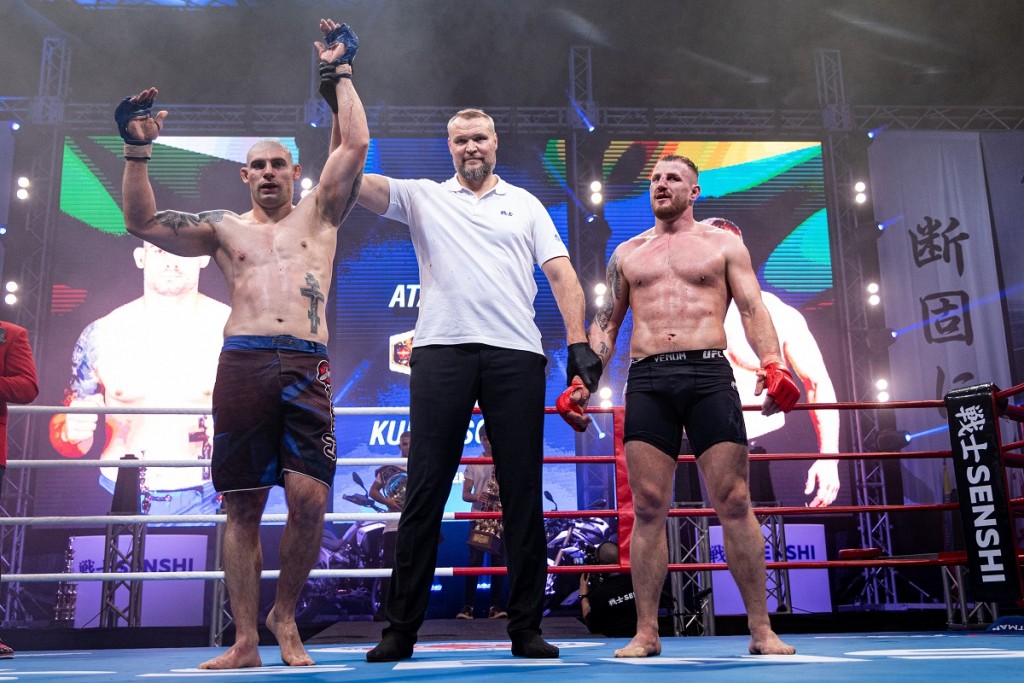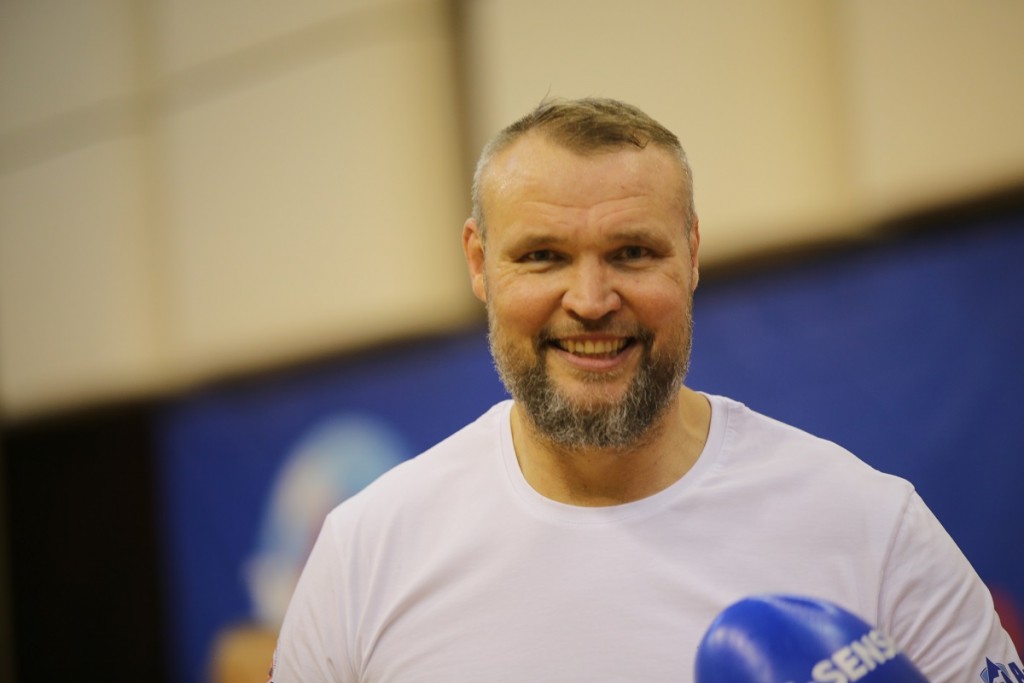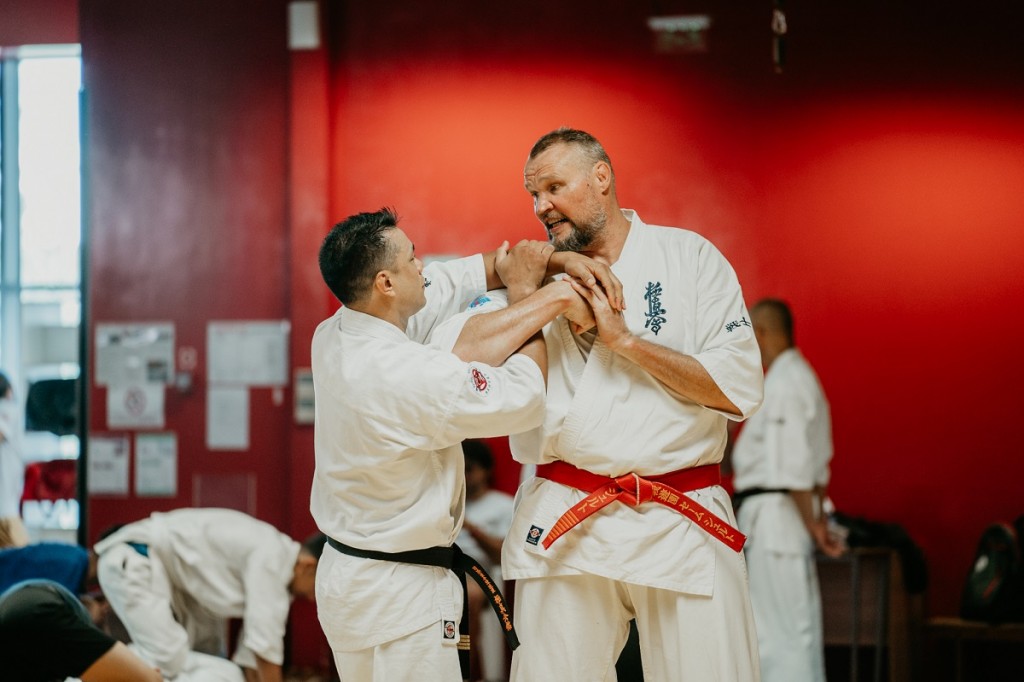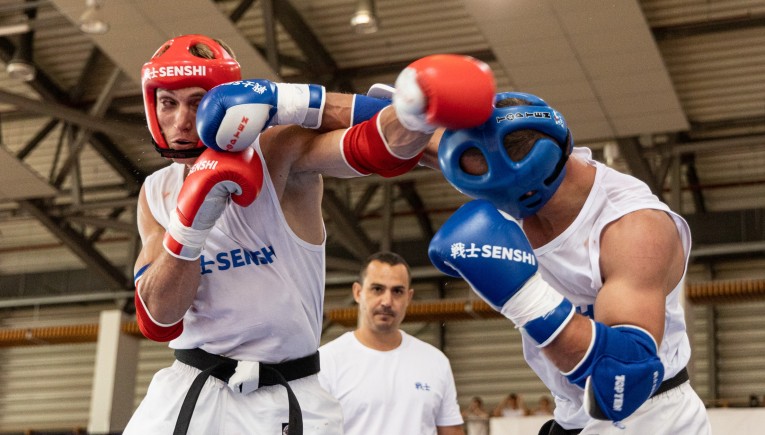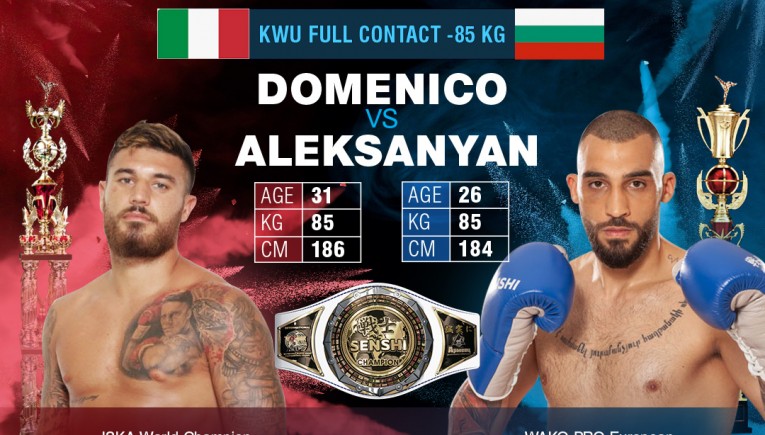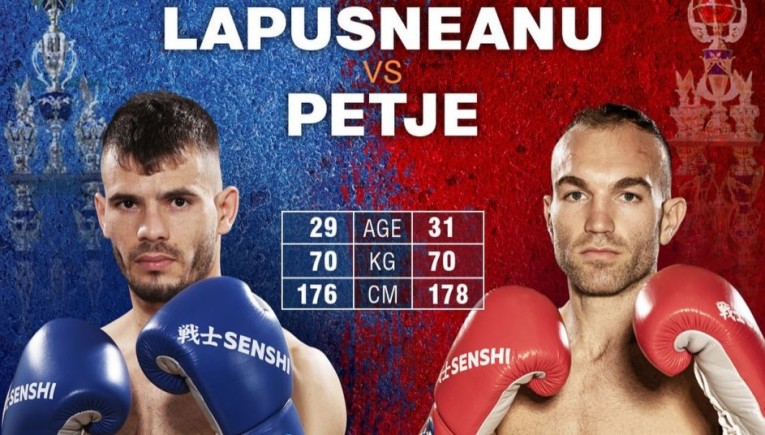In the history of combat sports, there has rarely been a figure as massive as Semmy Schilt – both literally and figuratively. This Dutch giant, born on October 27, 1973, is almost 2.11 meters tall (hence the nickname Hightower), and to this day remains the only kickboxer to win five major heavyweight championships. He is also the only fighter in K-1 history to win the world title three times in a row, and shares the record for most Grand Prix wins with Ernesto Hoost – 8 in total. In addition, Schilt has several film roles, in movies such as Transporter 3.
Currently, Schilt is the President of KWU SENSHI Europe, a member of the KWU SENSHI Board of Directors, and one of the signature boot camp instructors of the acclaimed fight gala chain. On September 7, Shilts will be on the beach at St. Constantine and Helena for the 23rd edition of SENSHI to referee the fights alongside other kickboxing legends such as Ernesto Hoost, Albert Kraus and Andy Souwer.
Mr. Schilt, you started your career in karate before transitioning to kickboxing and MMA. What initially drew you to martial arts, and how did your early experiences in karate shape your fighting style?
– I started martial arts at the age of 8. I was really drawn to it from back then. Every Sunday I played around with the family and as soon as I got my swimming certificate and was allowed to do sports, I started with Karate.
You hold the distinction of being the only kickboxer to have won 5 major heavyweight tournaments, being a four-time K-1 World Grand Prix Champion and a Glory Heavyweight Grand Slam Champion. Looking back, which victory stands out the most to you and why?
– I don’t want to choose a particular victory which stood out the most. I remember my first fights as Karateka, then I started to fight in Pancrase and became champion. After that, I fought for UFC and Pride FC, then started K-1 and finally – Glory. Each victory had its contribution to who I am today in sports and who I became as a person. Every loss made me a better fighter.
Were martial arts your natural, first choice for path in life?
– No, they were not my first choice. They came on my path and I embraced that. When I was young my mother went to a fortune teller and she indicated that my profession was going to be connected with me wearing a white suit. Expectedly, my mother thought I would become a doctor. However, being a doctor didn’t enter my plans at all. I learned to be a machinist in mechanical engineering. My first choice was to work with nature – but at that time I thought the Dutch nature was not that interesting. And later on…you know –
it turned out that the white suit was a karate gi.
What do you think you would do today if you hadn’t gone this way?
– That is very difficult to imagine… Probably I was going to become a mechanical engineer and work in a steel factory or something like that.
Who were your biggest inspirations or role models in martial arts?
– My father is my biggest inspiration! He always supported me in every decision I made. He did not always agree on everything, but he was thinking rationally and looking at things from all the different angles, before deciding to speak out.
Of course, I had movie role models, such as Bruce Lee, Chuck Norris, Jacky Chan, Dolf Lundgren.
You have faced many formidable opponents throughout your career. Who was the toughest?
– I always say that I am my toughest opponent. When I prepare for a fight, I could be so hard on myself that I could beat myself up.
To be fair, I learned the most things from my losses. I learned to never underestimate an opponent and be ready at the bell. To be always on my guard, when fighting. To visualize realistically and work to achieve my your vision. There is always a choice. Dream big, work hard, fight easy.
What is the feeling of fighting in front of millions of eyes? Isn‘t it too much of a responsibility?
– It is a special feeling. I try not to think about everyone who is watching me. When I’m on the ring, I’m thinking of my family, the people I love, and I focus on being grateful for having the opportunity to follow my dreams. This is the moment when I know I will have a great fight, Osu!
As president of KWU SENSHI Europe, how do you see the world of martial arts evolving in the future, and what trends do you think will be most significant?
– Martial arts are evolving a lot and we have to preserve the lineage. In my opinion, the sport needs full contact. We live in a world where everything has to be safe and calculated and people don’t take risks. We, as fighters, have to be tough. We learn to stand up after a defeat, we learn to find other ways to reach the same goal. SENSHI gives opportunities in any kind of fighting competition with its sets of rules: KWU FULL CONTACT, KWU SENSHI and KWU OPEN. These rules will change in time, but the key that will stay the same is the full contact. Training with full protection and competing with minimal protection.
If you could go back in time and give one piece of advice to your younger self at the start of your career, what would it be?
– I feel I had an outstanding career and I don’t regret a thing. If I could give my young self some advice, it would be: Follow your heart and find out what you seek.
Given that you had the chance to get back in the ring and face one more opponent, who would that be?
– I always wanted to be a champion, so who I was fighting against never mattered. Fighting was never personal. However, I wish I had the the opportunity to train with legendary fighters in their prime, to name a few: Kenji Kurosaki, Toshio Fujiwara, Ramon Dekkers, Rob Kaman, Bruce Lee. And of course – with our own SENSHI legends.
